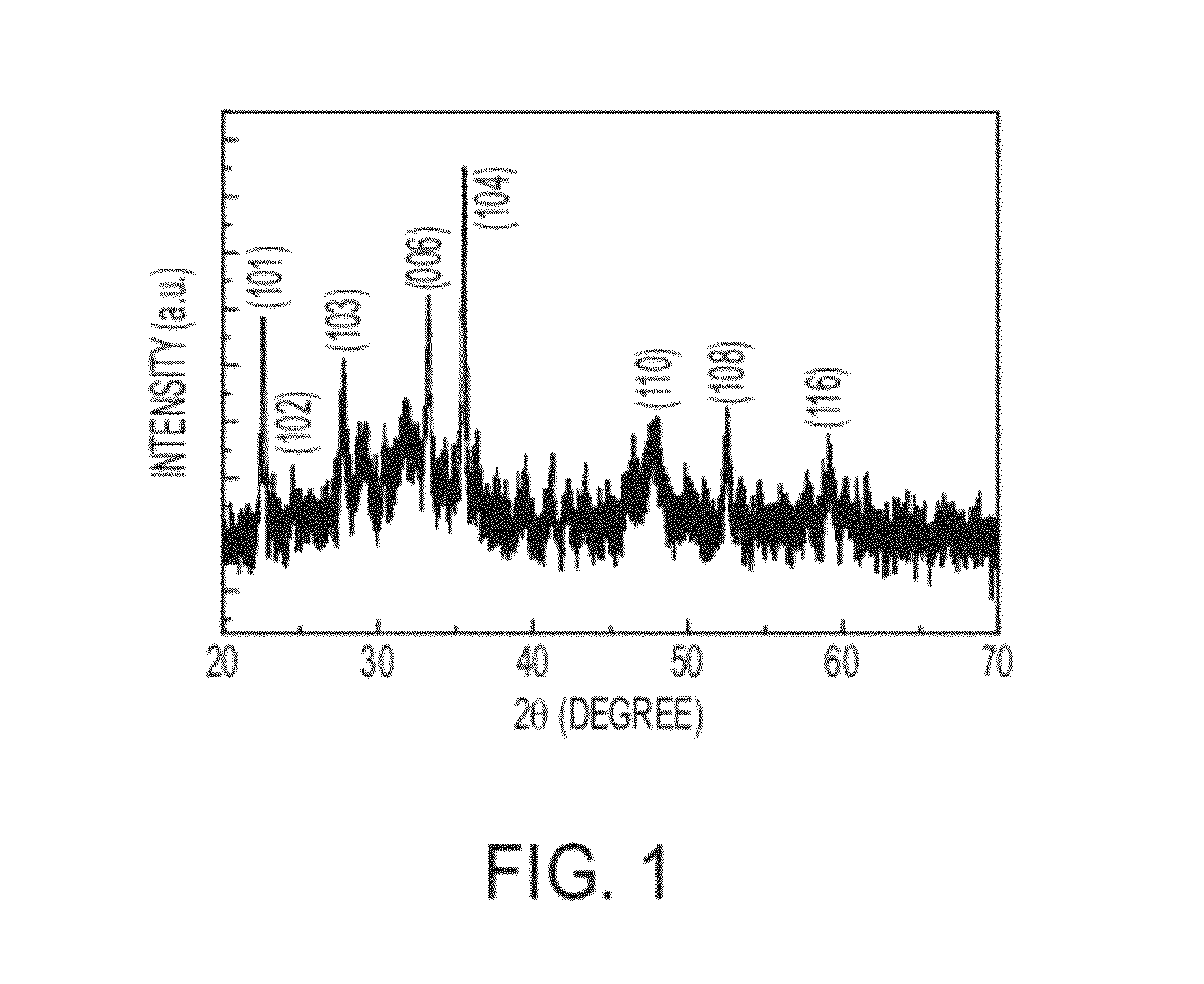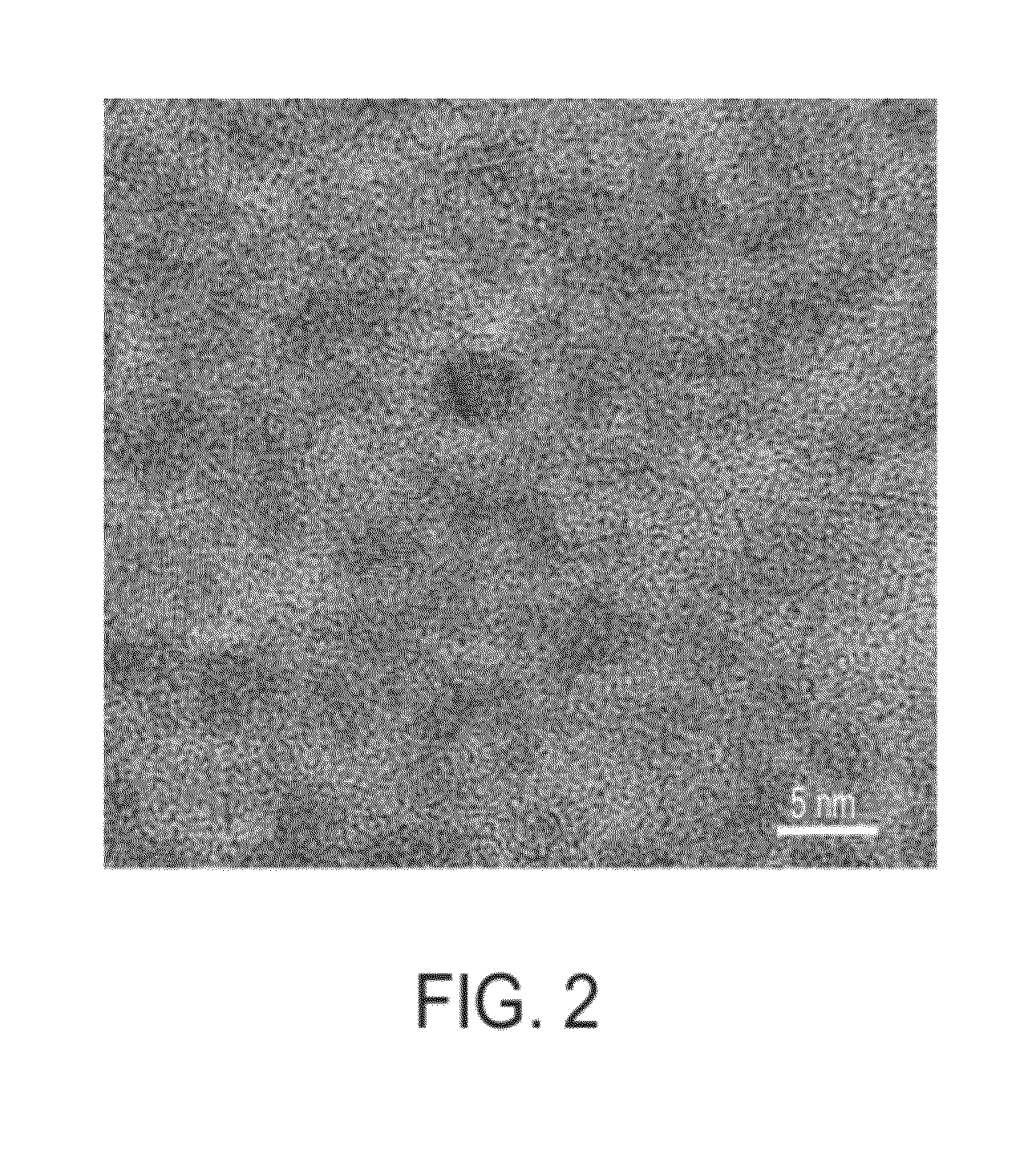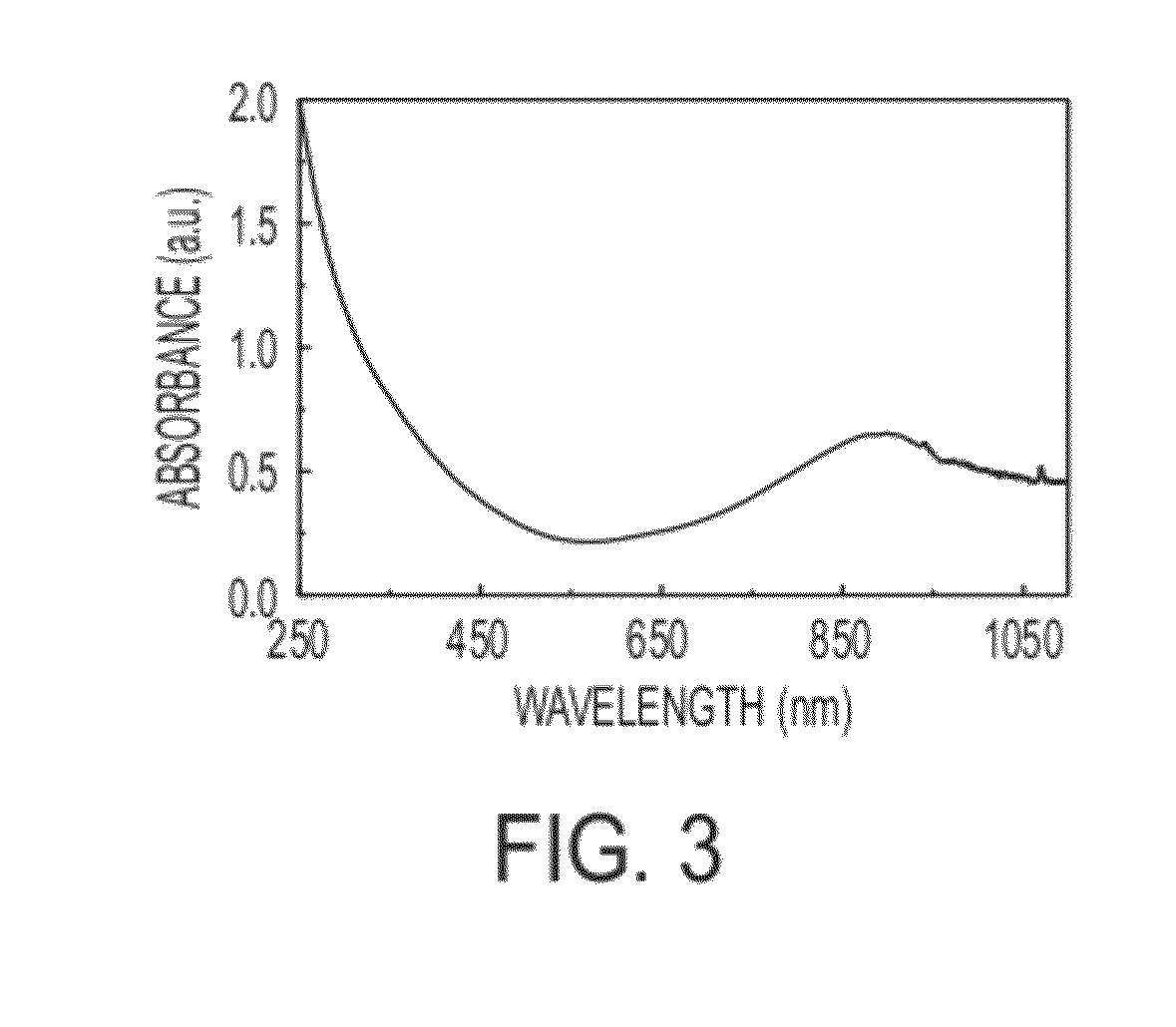Nanoparticles for use in tumor diagnosis and therapy
a technology of nanoparticles and tumors, applied in the direction of granular delivery, powder delivery, energy modified materials, etc., can solve the problems of high mortality rate of cancers after metastasis, increased chance of death, and high risk of men's death within five years, so as to improve the ability to diagnos
- Summary
- Abstract
- Description
- Claims
- Application Information
AI Technical Summary
Benefits of technology
Problems solved by technology
Method used
Image
Examples
working examples
Materials
[0040]Thioglycolic acid (TGA), CuCl2.2H2O, and thioacetamide were purchased from Sigma-Aldrich (St. Louis, Mo.). RPMI-1640 culture medium, calcein AM and EthD-1 LIVE / DEAD® viability kit were obtained from Invitrogen (Eugene, Oreg.). Gold nanoparticles (20 nm) were prepared by adding 5 mL of sodium citrate (25 mM) into a boiling aqueous solution of HAuCl4 (0.25 mM). The mixture was stirred until the solution turned into wine red color, indicating the completion of the reaction. Human cervix adenocarcinoma HeLa cells and human embryonic kidney 293 cells (HEK293) were obtained from American Type Culture Collection (Manassas, Va.).
Nanoparticle Synthesis and Characterization
[0041]Thioglycolic acid (TGA)-stabilized CuS nanoparticles were synthesized as follows: 0.017048 g of CuCl2-2H2O (0.1 mmol) was dissolved in 100 ml of distilled water, 0.2 mmol of TGA (approximately 14.2 μL) was added into the solution under constant stirring, and the pH was adjusted to 9.0 by drop-wise addit...
PUM
| Property | Measurement | Unit |
|---|---|---|
| diameters | aaaaa | aaaaa |
| wavelength | aaaaa | aaaaa |
| size | aaaaa | aaaaa |
Abstract
Description
Claims
Application Information
 Login to View More
Login to View More - R&D
- Intellectual Property
- Life Sciences
- Materials
- Tech Scout
- Unparalleled Data Quality
- Higher Quality Content
- 60% Fewer Hallucinations
Browse by: Latest US Patents, China's latest patents, Technical Efficacy Thesaurus, Application Domain, Technology Topic, Popular Technical Reports.
© 2025 PatSnap. All rights reserved.Legal|Privacy policy|Modern Slavery Act Transparency Statement|Sitemap|About US| Contact US: help@patsnap.com



